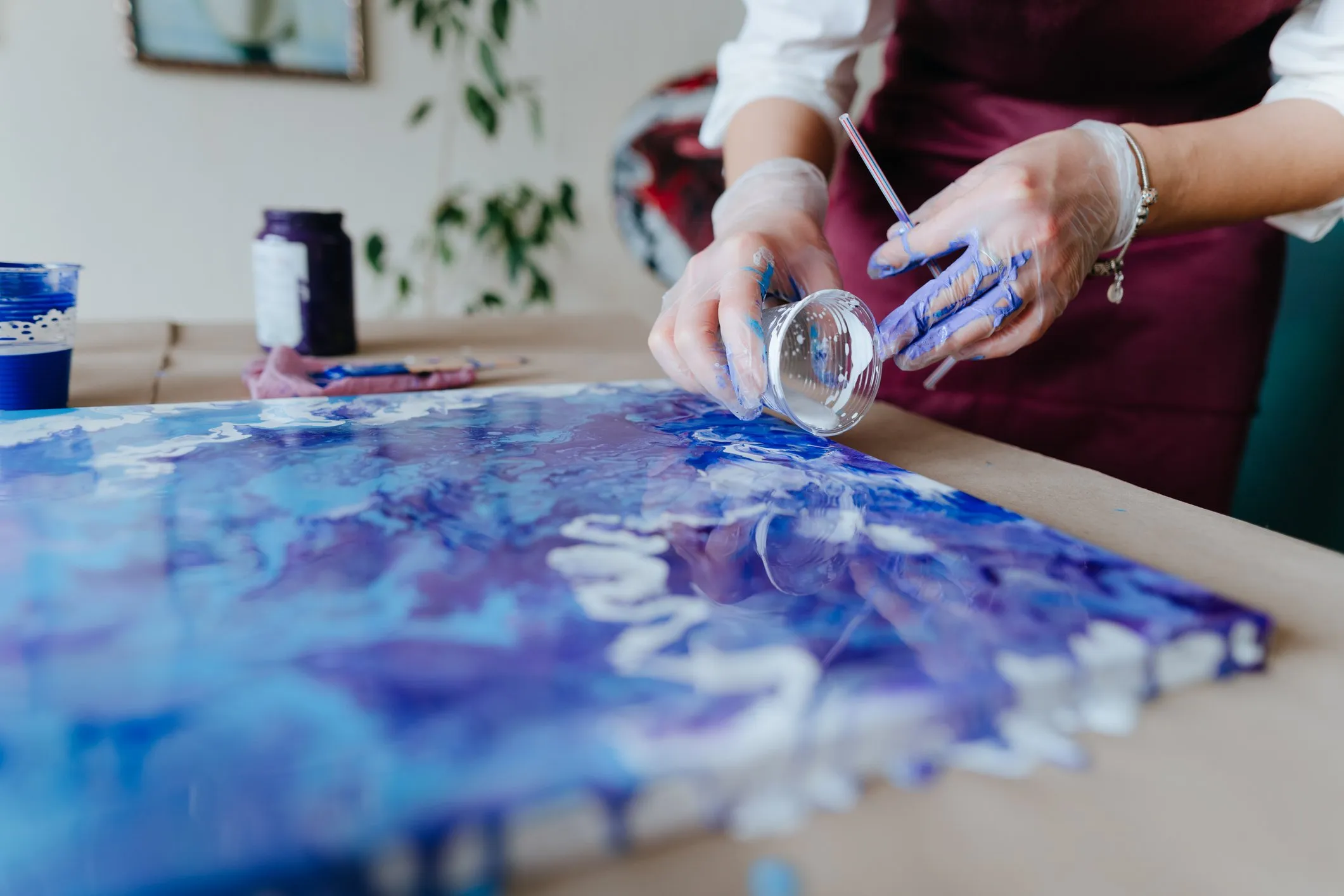Education
Acrylic Pouring Safety Tips: Protecting Yourself and Your Workspace

Acrylic pouring is a mesmerizing and creative art form that has gained immense popularity among artists and hobbyists. Its fluid and unpredictable nature allows for stunning abstract masterpieces.
However, amidst the excitement of creating captivating artwork, it’s crucial to recognize safety.
Acrylic pouring involves working with potentially hazardous materials, and without proper precautions, it can pose risks to both the artist and the workspace.
This article will explore essential safety tips to help protect yourself and your workspace during acrylic pouring sessions.
- Choose A Well-Ventilated Area:
A well-ventilated workspace is essential for acrylic pouring to ensure that any fumes and vapors released during the process are dispersed safely.
Setting up your pouring station near an open window or a room with proper airflow is ideal.
If you’re working in a space without adequate ventilation, consider using a fan or an air purifier to circulate and filter the air.
Proper ventilation protects you from inhaling harmful fumes and prevents the buildup of unpleasant odors that can linger in the room.
- Wear Appropriate Protective Gear:
Before getting into your acrylic pour painting ideas, wear appropriate protective equipment.
Disposable latex or nitrile gloves are an excellent choice to shield your hands from direct contact with acrylic paints and chemicals.
These gloves also prevent your skin from absorbing potentially harmful substances in some acrylic mediums.
Additionally, wearing a smock or an apron will protect your clothing from accidental spills and splatters, saving you from potential staining or exposure to paint.
- Utilize Safety Eyewear:
Safety goggles are a must-have when working with acrylic paints and mediums. When trying acrylic paint pouring techniques, splashes or accidental spills are risky, especially if you’re manipulating the paint vigorously.
Safety eyewear protects your eyes from any potential contact with paint, preventing irritation or injuries.
Ensure that your safety goggles fit securely and comfortably, allowing you to concentrate on your creative process without worrying about eye safety.
- Avoid Skin Contact:
Acrylic paints contain chemicals that can irritate the skin, especially if you have allergies or sensitive skin. Avoid handling the paint directly with your bare hands to avoid skin contact.
Instead, rely on gloves as a protective barrier. Immediately wash the affected area with mild soap and water in case of accidental contact.
If you experience any adverse reactions such as redness, itching, or rash, seek medical attention promptly.
- Keep Food And Beverages Away:
While immersing yourself in your artistic endeavors, it’s essential to maintain a clear boundary between your workspace and areas where you eat or drink. Accidentally ingesting paint or chemicals can be harmful to your health.
To avoid any mishaps, designate separate spaces for creative work and dining. This practice also prevents contamination of food and beverages with potentially toxic substances.
- Store Materials Properly:
After each acrylic pouring session, ensure that you store your materials properly. Close paint containers and seal them tightly to prevent drying and spills.
Store them in a cool, dry place away from direct sunlight. Consider organizing your acrylic paints, mediums, and other materials in labeled containers or shelves for easy access and to minimize the risk of accidental spills or mix-ups.
Keeping your workspace neat and organized promotes safety and efficiency during future projects.
- Dispose Of Materials Safely:
Acrylic pouring can generate waste materials such as disposable gloves, paper towels, or empty paint containers.
Disposing of these materials responsibly and by local guidelines for hazardous waste disposal is crucial.
Do not pour excess paint or acrylic-related waste down the drain, as it can contaminate the water supply. Instead, collect all waste materials in a designated container and dispose of them appropriately.
- Keep Children And Pets Away:
It would help if you always kept acrylic pouring materials out of the reach of children and pets to prevent accidental ingestion or exposure.
The paints’ vibrant colors and appealing textures may attract the curiosity of young children and pets, making it essential to restrict access to your workspace.
Consider setting up your pouring station in a separate room or using safety gates or barriers to ensure that children and pets cannot access potentially hazardous materials.
Conclusion:
Acrylic pouring is an exciting and visually captivating art form that offers endless possibilities for creativity.
However, safety should always be a top priority. By choosing a well-ventilated workspace, wearing protective gear, avoiding skin contact, and handling and disposing of materials responsibly, you can ensure a safe and enjoyable acrylic pouring experience.
Keep children and pets away from your workspace and maintain a clean and organized environment.
By adhering to these safety tips, you can immerse yourself fully in the artistic process and create stunning acrylic masterpieces while safeguarding your well-being and the safety of those around you! Create your art form that captures the magic of flowing colors with every stroke.
-
Blog1 year ago
MyCSULB: Login to CSULB Student and Employee Portal – MyCSULB 2023
-
Android App3 years ago
Cqatest App What is It
-
Android1 year ago
What Is content://com.android.browser.home/ All About in 2023? Set Up content com android browser home
-
Software2 years ago
A Guide For Better Cybersecurity & Data Protection For Your Devices
-
Latest News2 years ago
Soap2day Similar Sites And Alternatives To Watch Free Movies
-
Android2 years ago
What is OMACP And How To Remove It? Easy Guide OMACP 2022
-
Android3 years ago
What is org.codeaurora.snapcam?
-
Business2 years ago
Know Your Business (KYB) Process – Critical Component For Partnerships





















